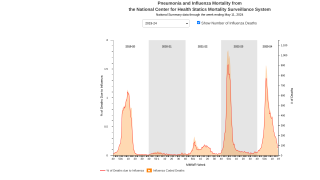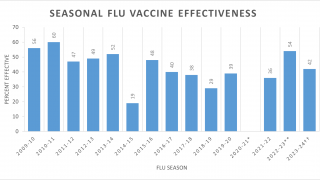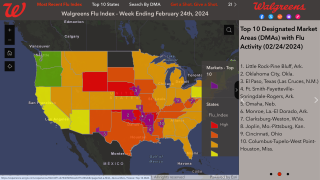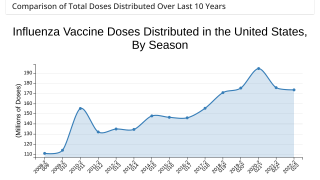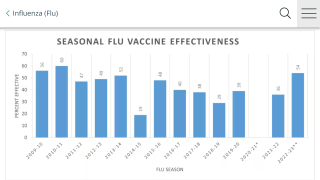It's Primetime for Influenza B

According to recent flu season information, the Influenza A virus peaked during late February 2018.
This is good news for most people.
The 2018 season was dominated by the Influenza A (H3N2) virus, a strain that is less receptive to current flu vaccines, says the Centers for Disease Control and Prevention (CDC)
The CDC reports the overall estimated vaccine effectiveness of the 2017–18 seasonal influenza vaccine for preventing medically attended, laboratory-confirmed influenza A virus infection was 36 percent.
The CDC's midseason Vaccine Effectiveness against B viruses was 42 percent.
However, the new CDC report says the number of influenza B cases have surpassed influenza A.
Which means, even if you already had Influenza A virus this year, the antibodies you formed will not provide protection from the B virus.
This is because people can get sick from both types of influenza during one season.
Influenza A and influenza B cause the seasonal flu epidemics during the fall and winter.
Your body develops an immune response which protects you from getting re-infected from the same virus, during the same year.
There are four different types of influenza A, B, C, and D. And, each type has various strains. Flu vaccines protect against the three or four viruses, depending on the vaccine that research suggests will be most common.
The CDC has characterized 2,214 influenza viruses collected during October 1, 2017 – March 17, 2018, including 535 influenza A (H1N1) pdm09 viruses, 989 influenza A (H3N2) viruses, and 690 influenza B viruses.
For 2017-2018, three-component vaccines are recommended to contain:
- an A/Michigan/45/2015 (H1N1)pdm09-like virus (updated)
- an A/Hong Kong/4801/2014 (H3N2)-like virus
- a B/Brisbane/60/2008-like (B/Victoria lineage) virus
Quadrivalent (four-component) vaccines, protects against a second lineage of B viruses.
The good news for the rest of the 2018 flu season is that influenza B viruses traditionally respond better to flu vaccines.
CDC continues to recommend influenza vaccination while influenza viruses are circulating in the community; several more weeks of influenza activity are likely.
Widespread influenza activity was reported by 17 states: Alaska, California, Connecticut, Delaware, Indiana, Maine, Maryland, Massachusetts, Nebraska, New Hampshire, New Jersey, New York, Ohio, Oklahoma, Rhode Island, Virginia, and Wisconsin.
Which means, it is still not too late to get a flu shot this year.
Flu vaccines are still available at most pharmacies offering several FDA approved flu vaccines.
The CDC Vaccine Price List provides the private sector prices for general information.
Flu vaccine discounts can be found here.
Vaccines, like any medicine, can have side effects, says the CDC. You are encouraged to report negative side effects of vaccines to the FDA or CDC.
Our Trust Standards: Medical Advisory Committee
















